London's Ultimate Museum Guide
London is a city of contrasts. Its cobbled lanes and grand boulevards are steeped in centuries of history, yet its energy remains undeniably modern. For travelers, navigating the city can be an overwhelming experience. How to explore its vast expanse, by Tube, on foot, or by bike? Each method offers a unique lens through which to view the capital’s complex narrative.
The London Underground, affectionately known as the Tube, is the backbone of the city’s transport system, a mode of transit that has shaped both the city and global rail systems. With more than 270 stations and miles of track beneath the city’s surface, it’s no wonder the Tube is considered one of the most efficient and iconic subway systems in the world. Yet, for many who seek a deeper connection with the city, walking its streets offers an entirely different experience, revealing not only the historic but also the eclectic, vibrant soul of London.
Over the course of my three-week stay, I traversed London’s iconic streets on foot, allowing the city to unfold at a more intimate pace. While the Tube served its purpose, it was the streets themselves, each telling its own story, that truly captured the city’s essence. Below, I highlight six streets that stand out, offering an immersive glimpse into London’s complex character.
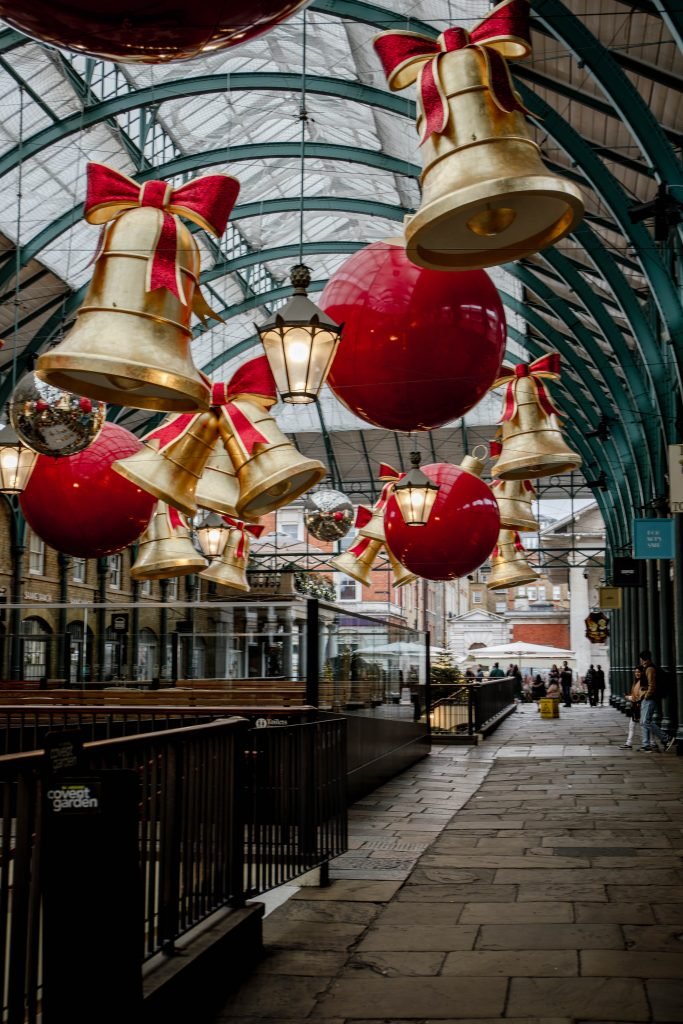
-
Save
Hi! I’m Kiki, a California native, who left my career in corporate finance to become a world traveler.
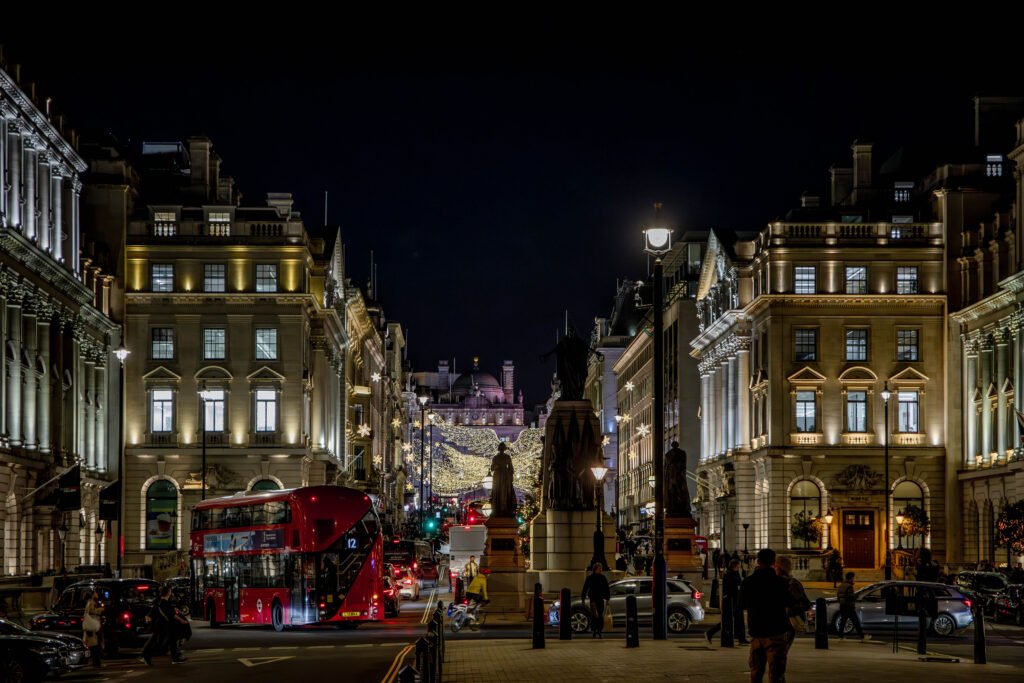
-
Save
Regent Street
One of London’s most iconic thoroughfares, Regent Street, is a testament to Georgian elegance and architectural ambition. Designed in the early 19th century by the renowned architect John Nash, Regent Street was part of a broader plan to connect Carlton House with Regent’s Park, reflecting the city’s aspirations for grandeur. Walking along this majestic street, the curving facades and elegant stonework evoke a sense of history, offering a window into the capital’s past.
Regent Street has long been a retail hub, and while its luxury boutiques and flagship stores, such as Hamleys, the world’s oldest toy store, remain a key attraction, the street’s true value lies in its historical significance. This is more than a shopping district; it’s an open-air museum, offering a glimpse of the city’s evolution from the 19th century to the present day.

-
Save
Hi! I’m Kiki, a California native, who left my career in corporate finance to become a world traveler.
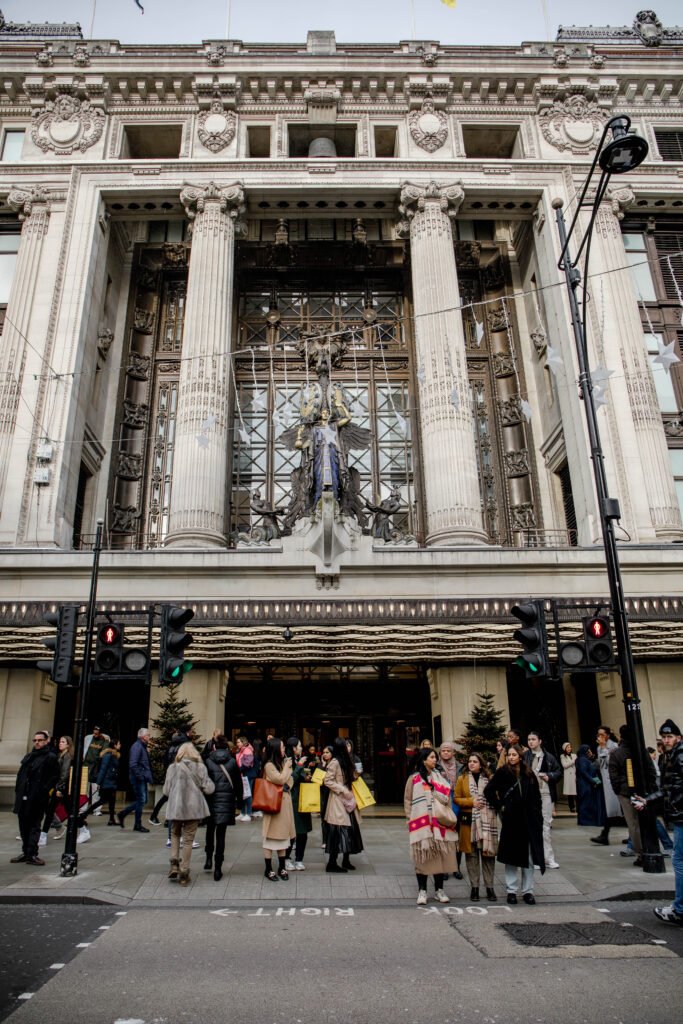
-
Save
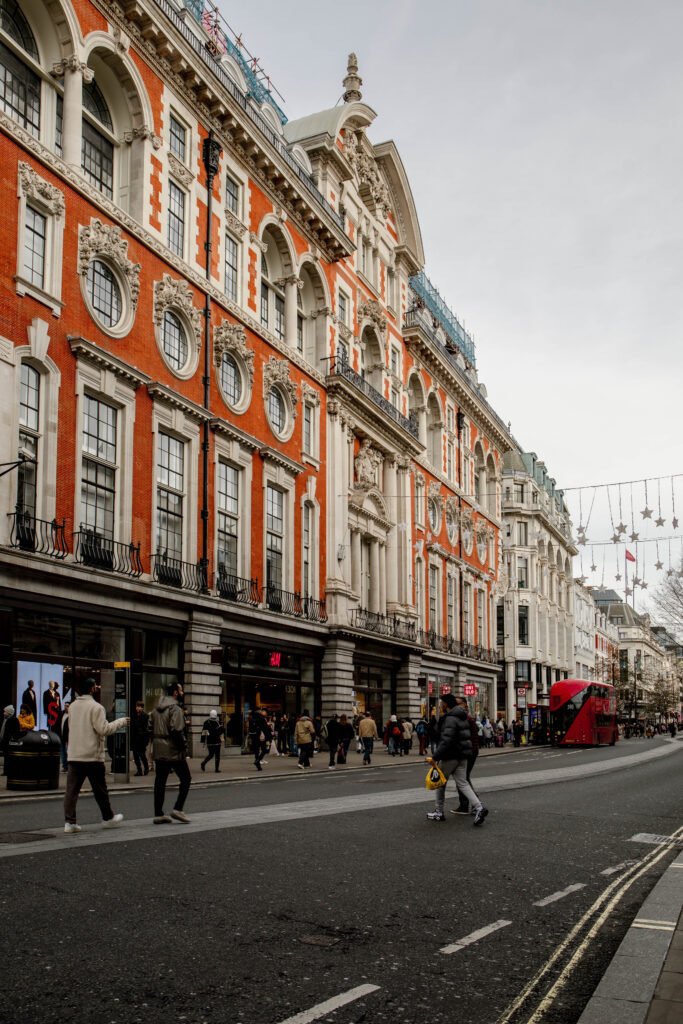
-
Save

-
Save

-
Save
Oxford Street
Oxford Street may be the retail heart of London, but its origins are far from glamorous. Once known as Tyburn Road, the street was a major route to the infamous Tyburn gallows, where public executions were held until the 18th century. Today, Oxford Street has been reborn as one of the busiest shopping streets in Europe, lined with flagship stores, department stores, and bustling boutiques.
The energy here is palpable, a stark contrast to its dark past. As I walked past the flagship stores of global brands, I couldn’t help but feel the weight of the street’s history, a history that was forever altered during World War II, when bombings devastated the area. Many of the buildings on Oxford Street were reconstructed in the post-war years, adding a layer of resilience to the street’s contemporary hustle.

-
Save
Hi! I’m Kiki, a California native, who left my career in corporate finance to become a world traveler.
South Bank
If Oxford Street represents London’s commercial energy, then the South Bank embodies the city’s creative spirit. Once an industrial wasteland, this stretch of the Thames has transformed into one of the city’s most vibrant cultural hubs. Home to landmarks like the Tate Modern, Shakespeare’s Globe Theatre, and the National Theatre, the South Bank pulses with creativity, offering something for every art lover.
As I strolled along the riverside, the sight of the London Eye towering above the city’s skyline reminded me of the area’s ongoing transformation. The South Bank’s rebirth began with the 1951 Festival of Britain, marking a turning point in the area’s history. Today, street performers, musicians, and artists bring the riverside to life, making it one of the most dynamic locations in the city.
Did you know? The South Bank is home to the world’s first-ever IMAX cinema, a cutting-edge cinema experience that has been delighting moviegoers since 1999.

-
Save
Piccadilly Circus
Piccadilly Circus is the heartbeat of London’s entertainment district. The sight of neon lights flashing above the crowds, combined with the historic Shaftesbury Memorial Fountain and the statue of Eros, makes this bustling square feel like the epicentre of the city.
Built in 1819 to connect Regent Street with Piccadilly, Piccadilly Circus has long been a crossroads of commerce, entertainment, and culture. From its place in iconic films to its role in the city’s modern-day landscape, Piccadilly Circus represents London’s vibrant, ever-evolving identity. A fun fact: the statue of Eros was one of the first statues in the world cast in aluminium, a testament to the city’s pioneering spirit when it was erected in 1893.

-
Save
Hi! I’m Kiki, a California native, who left my career in corporate finance to become a world traveler.
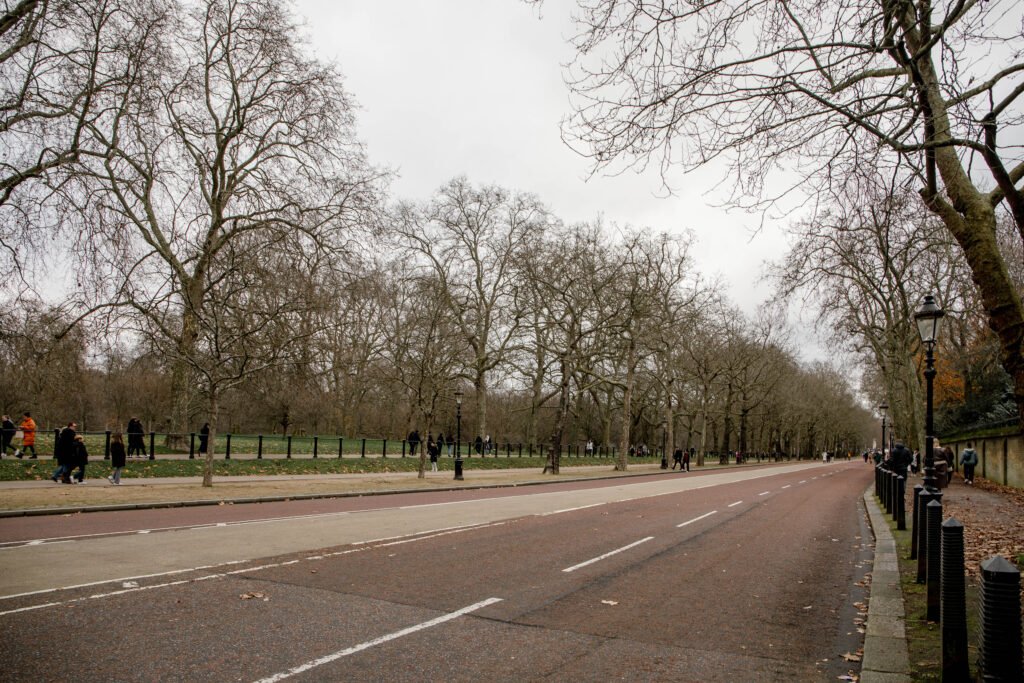
-
Save
The Mall
No street in London better represents the city’s connection to royalty than The Mall. This grand ceremonial avenue, flanked by majestic trees and Union Jack flags, leads directly from Buckingham Palace to Trafalgar Square, passing historic landmarks like the Victoria Memorial along the way.
The Mall has been the backdrop for some of Britain’s most significant royal events, from coronations to state visits. Walking down this regal boulevard, it’s easy to imagine the pageantry of royal processions. A personal highlight was recalling the scenes from Queen Elizabeth II’s Golden Jubilee in 2002, when The Mall was filled with crowds celebrating her 50-year reign. Designed in 1906 to rival the grand boulevards of Paris, The Mall remains the stage for London’s most significant royal spectacles.
Bond Street
Stepping onto Bond Street, the atmosphere shifts to one of refined luxury and exclusivity. This elegant street has long been associated with high-end fashion and aristocratic taste. Dating back to the 18th century, Bond Street was originally a fashionable gathering place for the wealthy elite, and it has retained that aura of sophistication throughout the centuries.
Today, Bond Street is synonymous with luxury shopping, featuring renowned designer boutiques, art galleries, and prestigious jewellers. As I wandered past its polished storefronts, I was reminded of the cultural figures who once frequented these streets, from Lord Nelson to Oscar Wilde. Bond Street comprises two distinct sections, Old Bond Street and New Bond Street, each with its own history and charm, together making up one of the world’s top luxury shopping destinations.

-
Save
Hi! I’m Kiki, a California native, who left my career in corporate finance to become a world traveler.
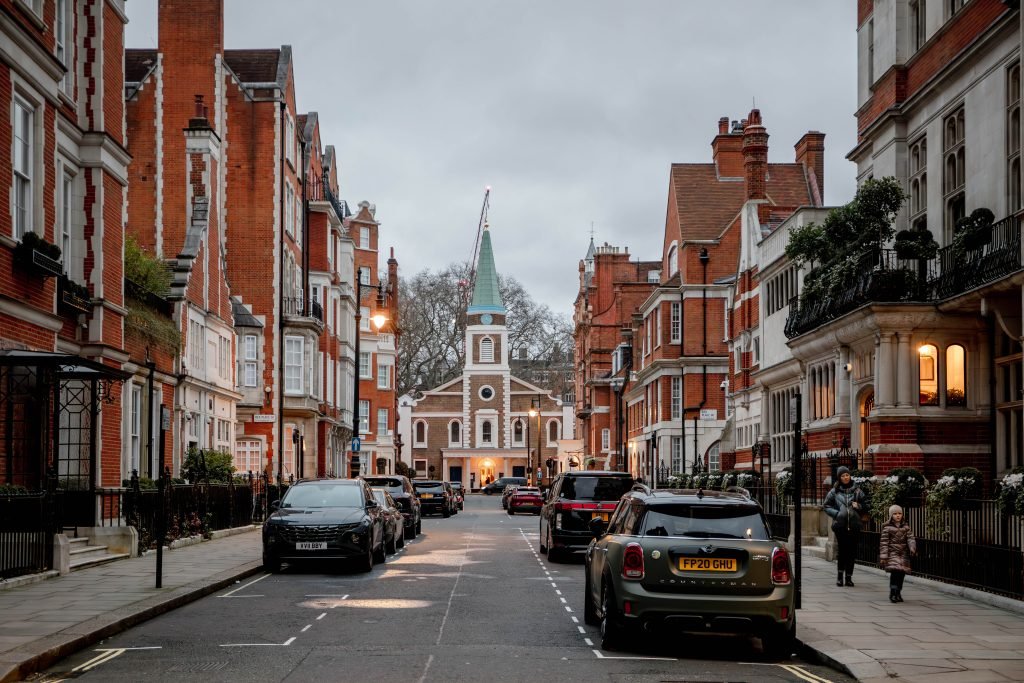
-
Save
📍 Location: London, England
✈️ How to Reach London:
- By Air: London is served by multiple international airports, including Heathrow (25 km west), Gatwick (45 km south), and London City Airport (11 km east).
- By Train: London is a major railway hub with connections to all parts of the UK and Europe. Major stations include King’s Cross, St Pancras International, and Paddington.
- By Bus: National and international buses arrive at key terminals like Victoria Coach Station and London Bridge.
- By Car: London is well-connected by motorways, but be aware of congestion charges and limited parking in the city center.
🕒 Best Time to Visit:
- May to September: The summer months offer warm weather, festivals, and a vibrant atmosphere.
- April and October: Mild weather with fewer tourists, ideal for sightseeing without the crowds.
- December: For a festive atmosphere with Christmas lights and markets, although it’s colder.
🌧️ Low Season:
- November to February: The winter months are quieter and less crowded, but expect colder temperatures and occasional rain. Ideal for budget travelers.
⏳ Ideal Stay:
4-5 days offer a comprehensive experience of London’s major attractions, neighbourhoods, and museums. Consider extending to 6-7 days if you plan to explore beyond central London.
📸 Hidden Gems for Photographers:
- Little Venice: Capture serene canals with narrowboats and waterside cafes, especially at sunrise or sunset.
- Regent’s Canal: A peaceful stretch with beautiful bridges, wildlife, and tranquil green spaces.
- Richmond Park: A large park in southwest London where you can photograph deer and enjoy stunning views of London from King Henry’s Mound.
- St Dunstan in the East: A ruined church garden in the heart of the city, perfect for capturing the contrast of nature against gothic architecture.
- Leadenhall Market: A Victorian covered market, famous for its ornate architecture and cobbled streets, often quieter than the more popular attractions.
👟 Pro Travel Tips:
- Avoid peak times: Try to visit major landmarks early in the morning or later in the evening to avoid the crowds.
- Public transport: The Tube and buses are the best way to get around, but always check for service disruptions.
- Dress in layers: The weather can be unpredictable, so bring a light raincoat and comfortable walking shoes.
- Book tickets in advance: For popular attractions like the London Eye or West End shows, booking online can save you time and money.

-
Save
Hi! I’m Kiki, a California native, who left my career in corporate finance to become a world traveler.
Related Blogs
Capturing those precious moments to turn into heartfelt, fond memories.
Be stunned by the many beautiful locations to get your best shots at.
The marriage ceremony takes place at a congregational gathering in the holy presence of Guru Granth Sahib.
Fabulous ideas that will help you in making your proposal extra special.
The Dove Letter
Sign up for exclusive stories, travel guides,
and behind-the-scenes updates
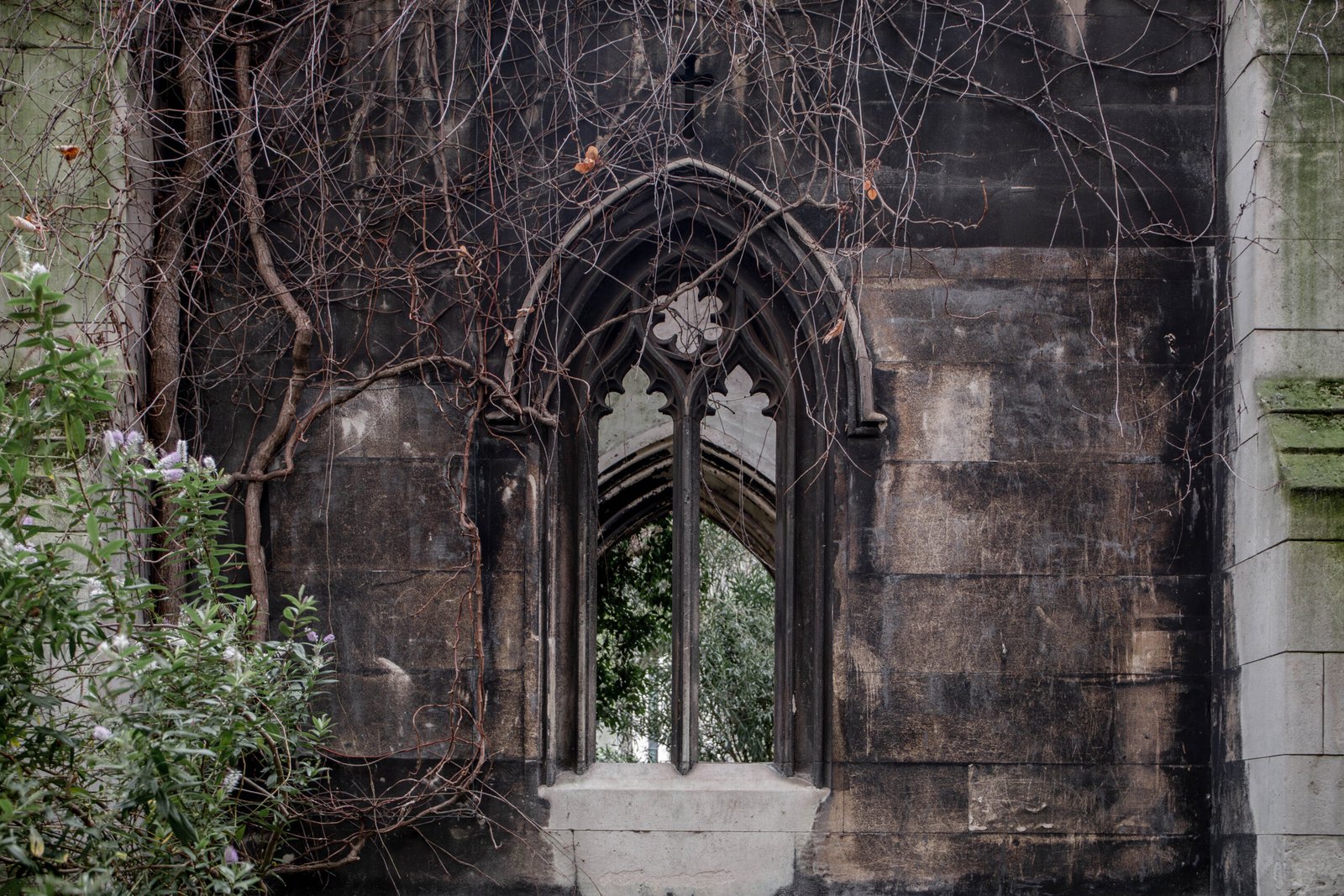
-
Save

-
Save
Hi, I’m Nitisha. I grew up in a world that told me to follow the script, but somewhere along the way I traded the script for a compass. These days, I follow where my feet and heart lead, from sleepy towns to saltwater coves, capturing stories that feel like home even when I’m far from it.

-
Save



